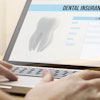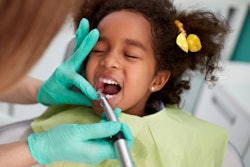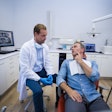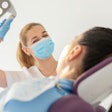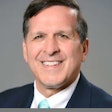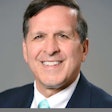
There are still myriad patients who have not returned to the dental chair since the COVID-19 pandemic incited lockdowns across the U.S. in March 2020. Although nearly 99% of dental practices have reopened as of February 2021, patient volume still remains lower than it was prepandemic, with a reported 80% of patients returning to the office for routine and elective procedures.
This patient behavior begs the question -- how can dental professionals help patients back into the dental chair?
Empowering patients to return largely relies on clearly communicating why they should feel confident they are not at a high risk of contracting the virus. But it also means communicating that they should be concerned with the potential impact on their oral and overall well-being from skipping appointments and ignoring dental needs.
Communicating new and existing safety methods
Before a patient enters the door of your practice, there is an opportunity to show how your practice keeps patients and their safety top of mind. This can be infused in the language on your practice's website, the staff's script when booking appointments, and the consideration for teledentistry.
 Dr. Samuel Low.
Dr. Samuel Low.Some patients are wary about what they will encounter upon return, which gives dentists the opportunity to remove the unknown and clearly communicate what they can expect.
One of the more common expectations that has been implemented during COVID-19 is the need to wear a mask. Research shows that wearing a mask definitely reduces the likelihood of a SARS-CoV-2 infection.
Clearly communicating that the patient will be asked to wear a mask until the procedure begins and that all staff members are also required to do so can immediately address patient concerns about the risk of contracting the novel coronavirus. Having mask requirements clearly marked on the website and door also visually reminds the patient that these protocols are in place.
Another requirement recommended by the U.S. Centers for Disease Control and Prevention (CDC) that promotes health and safety for both patients and staff is remaining 6 ft apart. Practices can space waiting room chairs at this distance, add markers for standing in line at the front desk, or, if possible, stagger appointments to avoid a high number of patients in the office at one time.
Patients will also value practices that can show they are adhering to the ADA's guidance on reducing aerosol production to stop the spread of COVID-19. For example, a practice leveraging Biolase's dental lasers can explain that these specific lasers produce less aerosol than traditional high-speed handpieces.
Communicating the risk of avoiding dental care
In addition to communicating why it is safe to return, it is also important for patients to understand why they should be concerned with infrequent visits or delaying their dental care. There are various health risks that can present themselves if patients do not keep up with their routine oral care.
Attending routine dental visits offers patients the opportunity for early detection of oral health conditions that may affect overall health, such as gum disease, which has also been linked to more severe cases of COVID-19. Studies have shown that periodontitis has been associated with a higher risk of intensive care unit (ICU) admission and COVID-19 patient deaths, as well as increased blood levels of biomarkers that are linked to worse disease outcomes.
In addition to periodontitis, poor oral health leads to an increased risk of a number of other health conditions, including oral cancer, heart disease, and diabetes. This increased risk stems from the oral-systemic link, in which oral bacteria contribute to disease in other parts of the body.
Although data show that most dentists are aware of the link between oral and systemic health, many patients are not. Patients who do not keep up with consistent oral care may not know they are putting themselves at risk for myriad other health conditions in the future.
Communication in the new normal
The core objective when communicating should always be to empower and educate your patients and the community you serve. It is important for patients to know what to expect when they return, as well as the processes (including the technology selected for their treatment) for adherence to the highest level of safety practices.
In the same breath, we should also educate patients about the risks that can stem from missing appointments so they can make informed decisions around their oral health. If patients are apprehensive about returning, they likely value their health, and it is our job to show them we are invested in their health as well -- which is why we want to get them back in the chair.
Dr. Samuel Low was named vice president, dental and clinical affairs, and chief dental officer of Biolase in October 2016. Low is a professor emeritus at the University of Florida College of Dentistry and associate faculty member of the Pankey Institute. He has 30 years of private practice experience in periodontics, lasers, and implant placement. He is also a diplomate of the American Board of Periodontology and past president of the American Academy of Periodontology.
The comments and observations expressed herein do not necessarily reflect the opinions of DrBicuspid.com, nor should they be construed as an endorsement or admonishment of any particular idea, vendor, or organization.


